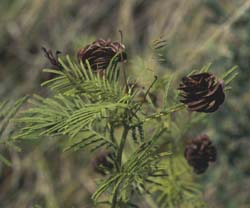Procedure
:
Students
will go to a prairie, or use plants in class or in a school or home garden.
Individual
students or pairs of students work on each worksheet.
In turn,
look at each plant, identify it, write its name, draw a sketch from life that
shows its adaptive
parts,
and write a short description of its adaptive parts.
Example:
Illinois
Bundle Flower
Lives
in dry-mesic soil
Leaves
are small and they close up, which lets them retain
water.
Seeds
are hard and pointed (can catch hold of passing crea-
tures)
and curved (can move farther in air)
Assessment
:
Students
present their findings to the class (at least one per student) orally or visually).
Whole class
discussion
or small group discussion can help those whose results are incomplete. Each
students should
be able
to find one adaptation on each plant. More practice in whole class or with peer
can improve
Prairie
Activity - Plant Adaptations - page 2 of 3
Illinois Goals and Standards addressed:
Goal
12: Standard B: Know and apply concepts that describe how living things
interact with one
another
and with their environment. Early elementary through junior high.
